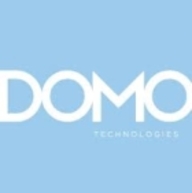

Domo and Google Cloud Datalab are competing in the data analysis and visualization category. Domo tends to have the upper hand in usability and cost-effectiveness, while Google Cloud Datalab stands out for advanced data processing and machine learning capabilities.
Features: Domo offers rich dashboard capabilities, multiple integrations, and a user-friendly interface for business intelligence. It supports customizable data visualization, allowing for easy manipulation and real-time data integration. Google Cloud Datalab provides robust computational tools, collaborative data handling, and integration with other Google services, ideal for data exploration and large data set management.
Room for Improvement: Domo's areas for improvement include enhancing some advanced analytical capabilities and expanding support for machine learning functions. It also could benefit from more customizable data solutions. Google Cloud Datalab might focus on easing deployment complexity, making the system more accessible for non-technical users and improving customer support responsiveness.
Ease of Deployment and Customer Service: Domo is known for its rapid deployment and robust customer service which offers quick problem resolutions, ensuring smooth onboarding. In contrast, Google Cloud Datalab requires more technical expertise during deployment but integrates effectively with other Google Cloud services.
Pricing and ROI: Domo features flexible pricing options that prove cost-effective for businesses seeking simple solutions and tangible ROI. Google Cloud Datalab incurs higher costs due to its advanced infrastructural needs but offers significant ROI for companies investing in data-driven analytics strategies.


Domo is a cloud-based, mobile-first BI platform that helps companies drive more value from their data by helping organizations better integrate, interpret and use data to drive timely decision making and action across the business. The Domo platform enhances existing data warehouse and BI tools and allows users to build custom apps, automate data pipelines, and make data science accessible for anyone through automated insights that can be shared with internal or external stakeholders.
Find more information on The Business Cloud Here.
Cloud Datalab is a powerful interactive tool created to explore, analyze, transform and visualize data and build machine learning models on Google Cloud Platform. It runs on Google Compute Engine and connects to multiple cloud services easily so you can focus on your data science tasks.
We monitor all Data Visualization reviews to prevent fraudulent reviews and keep review quality high. We do not post reviews by company employees or direct competitors. We validate each review for authenticity via cross-reference with LinkedIn, and personal follow-up with the reviewer when necessary.